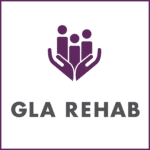The Benefits of Using a Life Care Plan report in Estate Planning/Litigations
By Galit Liffshiz MA OT Reg.(Ont)Certified Life Care Planner/Designated Capacity Assessor Covering …
On the Benefit of Using a Life Care Plan Report in Estate Planning and Litigation
Reviewing the Mrs. Kollmuss and Mr. Kollmuss case law BCSC 709 (CanLll) 2012, we will examine …
The Importance of Evidence to Support Recommendations in a Future Care Cost Report
In this blog, we will explore the significance of having appropriate evidence …
Thomas Andreas Klatt v. La Toc Holdings Limited, 2021 ONSC 2121
Hope you are enjoying the winter season! In this edition of our newsletter, we will be discussing the court decision …
Basic Supervisory Care in the Attendant Care Assessment, Form 1: Things to Consider When Making Recommendations
In the court decision Joslin …
Simmons v. BelairDirect Insurance Company, 2023 CanLII 26935 (ON LAT)
Hello everyone! Hope you are all embracing the blooming beauty and rejuvenating spirit of the spring season! 🌸 In this …
What is the Test of Admissibility?
In this blog, we will discuss the recent court decision: Morris et al. v. Prince et al., 2022 ONSC 1291. In this voir dire, the judge ruled the defense expert life care …
The Importance of OT Input in the Diagnosis of Chronic Pain
In Mustafa v. Aviva General Insurance Company, 2022 CANLII 81523 (ONLAT), Mr. Mustafa was involved in an MVA on …
Cognitive Functional Capacity Evaluation (Cog-FCE)
GLA Rehab now offers an assessment called the Cognitive Functional Capacity Evaluation (Cog-FCE.) This is in addition …
Structured Work Activity Group Test (SWAG)
Written by Lian Yaffe, Occupational Therapist, OT Reg. (Ont.) As noted in our fall newsletter, several types of assessments are …
Using “Occupational Gifts” to Maintain Meaningful Routine during COVID-19
By Jamie Laframboise, MSc (OT), OT Reg. (Ont.) Daily routines, or the regular sequences …













